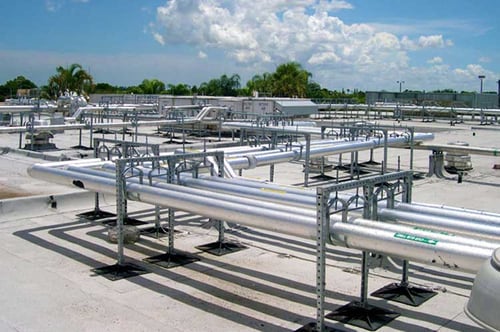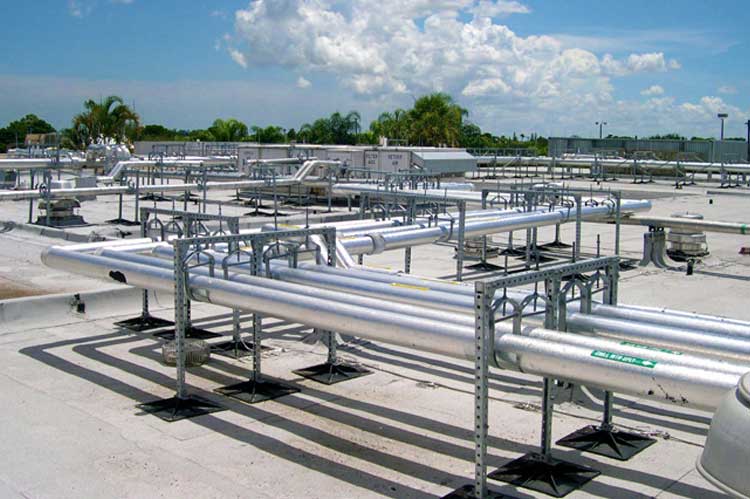 Your roof support system is only as good as the materials used to build it. Since roof supports undergo constant exposure to the elements, protection from corrosion is essential. The process that protects roofing materials from corrosion is called galvanization. There are a few different ways to accomplish it, but the methods do produce somewhat different results. And, when it comes to roof support systems, those differences matter.
Your roof support system is only as good as the materials used to build it. Since roof supports undergo constant exposure to the elements, protection from corrosion is essential. The process that protects roofing materials from corrosion is called galvanization. There are a few different ways to accomplish it, but the methods do produce somewhat different results. And, when it comes to roof support systems, those differences matter.
1. Hot-Dipped Galvanized Steel
Hot-dipped galvanized steel is the material most often used when structural integrity is important. This type of galvanization takes place after the product – in this case, your roof supports – are fabricated. First, the surface of the finished product is prepped using a three-step process.
- The item is immersed in a caustic bath to remove grease and oil.
- The second step is called pickling. The item is immersed in either sulfuric acid or hydrochloric acid to remove oxides and mill scale.
- The last step is called fluxing. It removes any oxidization that formed since pickling.
Next, the prepped item is dipped in a hot bath of molten zinc. The zinc doesn’t just coat the steel; there’s a chemical reaction that permanently binds the two metals together.
The Results
The zinc coating on steel that has been galvanized using the hot-dip method forms a thicker coating than steel galvanized in other ways. That thicker coating is important for metal that will be constantly exposed to the elements, like your roof supports. In addition, since the galvanization takes place after fabrication, there are no cut edges or welds where unprotected steel is exposed, further reducing the risk of corrosion.
2. Pre-Galvanized Steel
Pre-galvanized steel is treated prior to fabrication. Also called “continuous sheet galvanization,” the process is similar to hot-dipping, but instead of dipping a single item into a bath, entire sheets of steel are run through molten zinc.
The Results
Pre-galvanized steel is inferior to hot-dipped galvanized steel in two ways. First, the zinc coating is thinner and, therefore, offers less protection against corrosion. In addition, the fabrication process will expose raw edges that lack a zinc coating, making them vulnerable to corrosion.
3. Electrogalvanized Steel
Electrogalvanization uses an entirely different process than the prior two methods.
The raw metal is placed into an electrolytic bath along with an electrically charged anode of pure zinc. An electric current dissolves tiny zinc particles into the electrolytic bath, and those particles then bond to the steel.
The Results
Electrogalvanization results in a thinner coat of zinc than either of the other two methods, leaving steel that has been galvanized this way more vulnerable to corrosion. However, electrogalvanization produces an attractive, shiny finish and is therefore often used for ornamental items.
The gold standard for roof support systems is clearly hot-dipped galvanized steel. When it comes to something as important as the supports holding up the pipes and equipment on your rooftop – all of which are major capital investments – don’t settle for second best. Roof supports made out of anything other than hot-dipped galvanized steel put your roof and all of the structures on it at risk.





